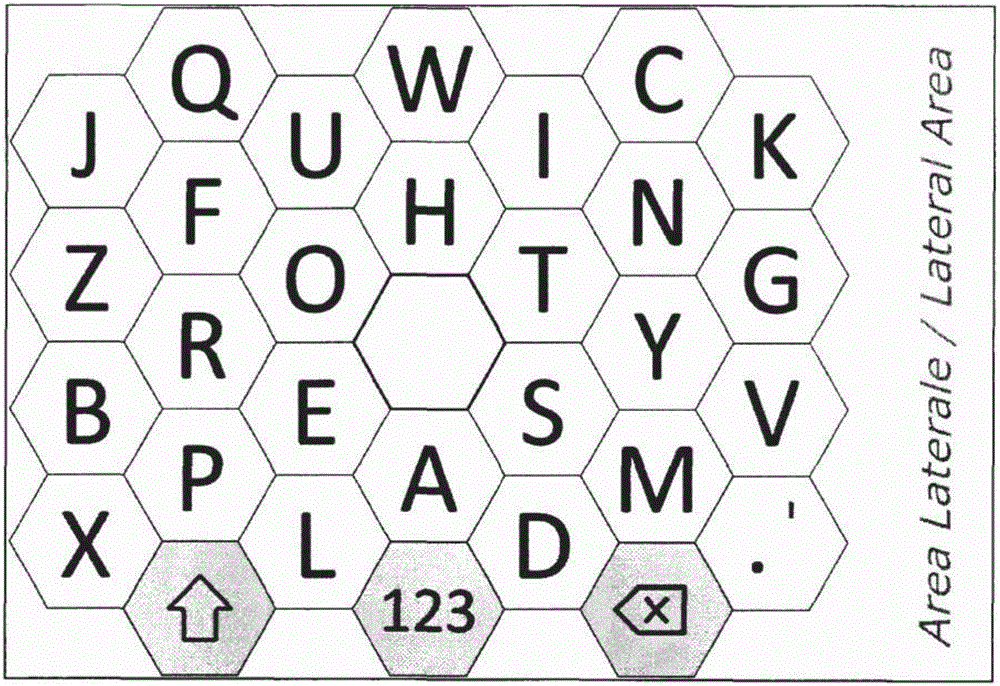Computer keyboard layout, structure and arrangement
A keyboard layout and layout technology, applied in the input/output of user/computer interaction, calculation, input/output process of data processing, etc., can solve problems such as not representing a new keyboard layout
- Summary
- Abstract
- Description
- Claims
- Application Information
AI Technical Summary
Problems solved by technology
Method used
Image
Examples
Embodiment Construction
[0022] To better understand the hexagonal structural scheme, a code consisting of a letter and a number was associated to each unit (Fig. 1).
[0023] From unit A1 to unit G3, letters of the alphabet are assigned, with a few exceptions, which are explained in the following paragraphs. Due to this hexagonal structure of the layout, most cells have some neighbors which follow the following scheme. This configuration allows the finger to reach adjacent cells as well as further cells in a faster and more efficient manner (Fig. 1).
[0024] B2, B3, F2, F3, and D3 make up 18% of all units, each with six adjacent letter-containing units
[0025] C1, E1, B4, F4, D2, E2, E3, D4, C3, C2 constitute 37% of all units, all having five adjacent units containing letters
[0026] A2, A3, G2, G3 constitute 15% of all units, each with four adjacent units containing letters
[0027] B1, D1, F1, E4, C4, A1, G1 constitute 26% of all units, each having three adjacent units containing letters
[...
PUM
 Login to View More
Login to View More Abstract
Description
Claims
Application Information
 Login to View More
Login to View More - R&D
- Intellectual Property
- Life Sciences
- Materials
- Tech Scout
- Unparalleled Data Quality
- Higher Quality Content
- 60% Fewer Hallucinations
Browse by: Latest US Patents, China's latest patents, Technical Efficacy Thesaurus, Application Domain, Technology Topic, Popular Technical Reports.
© 2025 PatSnap. All rights reserved.Legal|Privacy policy|Modern Slavery Act Transparency Statement|Sitemap|About US| Contact US: help@patsnap.com



